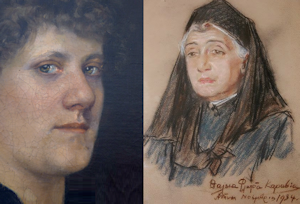
1871 - Birth of Theologia Flora.
Τheologia Flora (Thalia Flora) is one of the most important and productive Greek painters. Her work has not yet been fully catalogued. However, it is certain that her oil paintings exceed 2,500. A large number of drawings and watercolors have also been detected.
Ηer father was priest Christodoulos and her mother’ s name Anastasia Mouchtari. The family moved in 1874 from Siatista, Western Macedonia and settled in Makrochori of Eastern Thrace, near Constantinople.
Thalia Flora applied to study at the School of Arts in Athens (later the School of Fine Arts). Her application was rejected because she was a woman. Thalia Flora moved to Munich (1895) to study by the Greek painters Gyzi and Iakovidis and completed her studies in Paris.
She returned back to Istanbul in 1898 to work as a professional painter. In 1900 she changed her name from Theologia to Thalia.
Thalia Flora participated in the International Art Exhibition in Paris where she was awarded for her painting “The Guitarist”.
In 1902 she painted the portraits of the members of the Sultan's family in Istanbul.
From 1907 and for more than thirty years, she lived in Egypt. She met in Alexandria her future husband Nikos Karavias, publisher of the Greek newspaper “Efimeris”. Thalia Flora – Karavia founded and directed the Alexandria School of Painting, with a significant impact on the Greek community of the city.
During the Balkan Wars (1912-1913), she followed the Greek Army as a war correspondent for the newspaper published by her husband. She depicted many war scenes in coal, chalk and pastel. Later, Thalia Karavia described her experiences from the events of that time in her book “Impressions from the Balkan Wars of 1912-1913: Macedonia-Epirus” (typ. Moussiadou-Marda, Athens 1936). She also followed the Greek Army in Asia Minor war (1918–1922). Finally, Thalia painted scenes from the Greek-Italian war of 1940–1941.
She settled in Greece with her husband in 1939. Thalia Flora – Karavia died in Athens in 1960.
Apart from the war depictions, Thalia Flora-Karavia became famous for her approximately 500 portraits. Among the celebrities she designed are the poet K.P. Kavafis, the writer Alexandra Papadopoulou, etc. She also illustrated books and was also involved in journalism. Esat-pasha of Ioannina said once to her husband:
“ While you smoke one cigarette, three sketches are finished by your lady ”
In general, Thalia Flora Karavia's work is according the so-called "Munich Academic School". Her paintings however have much of the light and color characterizing the Impressionists. "I work as an impressionist," she said in a 1955 interview.
Her works "The Roman Aqueduct" and "Sunset over Jerusalem" are typical of the realistic conservative conception reaching an impressionistic performance, according to what she learned during her apprenticeship in Munich, with strong expressive colors. Both paintings are probably from around 1905 -1910.

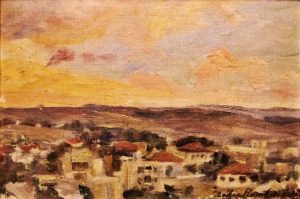
However, her last works after the war, show that she surpassed Impressionism, to turn to Expressionism.
She was honoured with the Silver Medal of the Academy of Athens in 1945 and with the Cross of Brigadiers of the Order of Charity in 1954.
Her works are exhibited in the National Gallery of Greece, in the National History Museum, in the Municipal Gallery of Ioannina, in the Gallery of E. Averof (Metsovo), and elsewhere. A significant part of her plans from the wars are in the Headquarters of the Army Corps in Thessaloniki and in the War Museum of Athens.
Publisher: Hellenic Parliament Foundation, 2012
Author: Thalia Flora Karavia















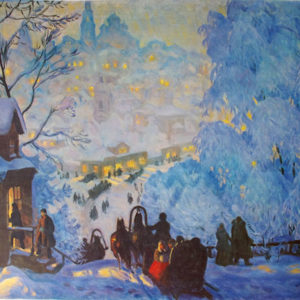

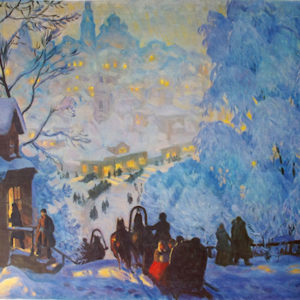





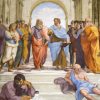
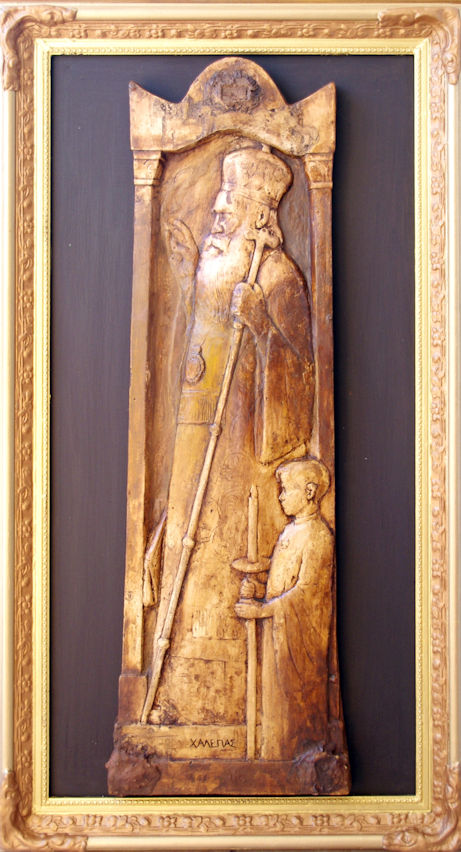
Admin
Admin